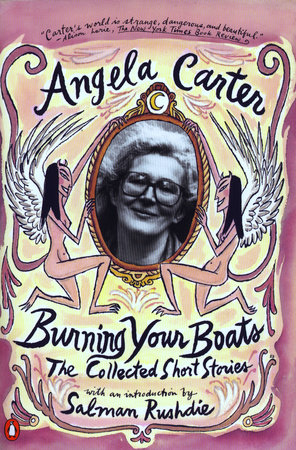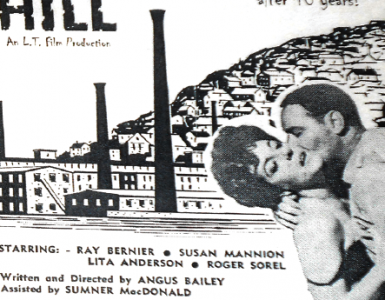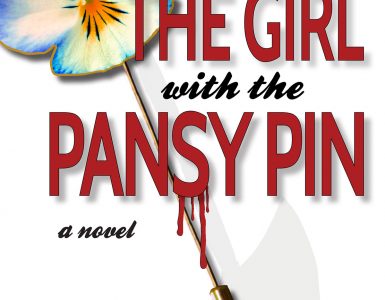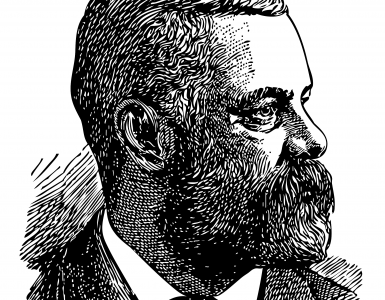by Eugene Hosey
First published in August/September, 2006, Volume 3, Issue 3, The Hatchet: Journal of Lizzie Borden Studies.
Angela Carter’s “Lizzie’s Tiger” is a shorter and simpler excursion into Lizzie lore than her masterpiece, “The Fall River Axe Murders.” Both stories first appeared in 1981, but this tale about an incident in Lizzie Borden’s childhood reads like an introduction or an appendix to the bigger work. At any rate, it is a stab at the subject in a context utterly free of the murder case. The story has no plot, but is presented as an episode in the life of a four-year-old Lizzie, who lives with her older sister and her father in the house on Ferry Street, before Andrew’s second marriage.
The first few paragraphs are a plunge into Carter’s grotesque, expressionistic Fall River and particularly the Ferry Street neighborhood, which is decadent, immigrant-dominated, and hemmed in by views of factory smokestacks. Houses here lean like drunken entities. Streets run at odd angles. The houses on Ferry Street are in serious disrepair, with shutters hanging off broken hinges and windows stuffed with newspapers. A 13-year-old Emma is doing a poor job of keeping house and looking after Lizzie. There is no parental guidance from the selfish, bitter Andrew Borden. Like her father, Lizzie is not affectionate; and unlike Emma, she has an independent spirit. Carter cannot resist some foreshadowing about the bloody day in the future in her description of the slum-like interior:
. . . mildew on the dark wallpaper with a brown pattern like brains, the ominous crimson border round the top of the walls, the sisters sleeping in one room in one thrifty bed.
The story is that a traveling circus comes to town, and the posters announcing it portray the head of a tiger, which rouses Lizzie’s curiosity. The way the author brings about the advertisement without introducing an unnecessary character is interesting in terms of narrative technique: “A hand came in the night and stuck a poster, showing the head of a tiger, onto a picket fence.” Lizzie is introduced to the world of entertainment by the simple act of a nonentity under cover of darkness.
Currently there is ongoing debate about whether Lizzie truly lived in strict, puritanical confinement—or if she mingled with the immigrant “riff-raff.” For some, it may be interesting but unbelievable that Lizzie would slip away from Emma and her father, and find herself in step with the Irish and Portuguese for a good time at the circus. For others, an acceptance of Lizzie’s lack of concern or prejudice about class or ethnicity in the world around her makes this scene more plausible. The author sees the child as a survivor as opposed to a victim, suggesting that her instinctual response to misery inside the house would be to seek alleviation outside of it.
Carter’s characterization of Lizzie is definite on a few key points—that she is plucky, brave, curious, and resourceful. Strange-looking people and bizarre twists and turns do not throw her off balance. She seems to have an unquenchable thirst for new experience. She is more than willing to be carried along like a plaything among strangers so long as the sights and sounds are stimulating. Carter shows how a small child can pass through a crowd from one gathering to another, unnoticed at one turn and admired and protected at another. This little Lizzie brings to mind the uncanny resilience and determination that children often possess in spite of their vulnerability.
Once Lizzie finds herself at the heart of the circus party, Carter tells us that, “The devil got into Lizzie, then.” She steals drinks of hard cider from underneath a table. A snorting pig finds her, and she follows it to a dark sexual world where she sees adult nudity for the first time; she even experiences molestation from a perverted man who gives her a gratuity for the use of her hand. She puts the nickel in her pocket and continues to explore. The disturbing irony is that Lizzie has also unknowingly prostituted herself. It is a sample of Carter’s preoccupation with the lurid underside of human interaction.
All along, Lizzie has been searching for the tiger. When she finds its cage, someone volunteers to hold her up high enough for her to see. The tiger’s size, power, and gracefulness fascinate her. Carter draws some correlation between the stripes on the animal’s body and the bars of its cage, as if this beast were fated for imprisonment and abuse. Lizzie feels a kindred spirit or a strange form of communication with the tiger.
Then, oh! Then . . . it came towards her, as if she were winding it to her on an invisible string by the exercise of pure will. I cannot tell you how much she loved the tiger, nor how wonderful she thought it was. It was the power of her love that forced it to come to her, on its knees, like a penitent.
The story ends with recognition from the crowd that this is Andrew Borden’s offspring, a princess among daughters. But she is a little girl in awe of a beast. Is Lizzie to be a lady or a tiger, Carter seems to ask. Lizzie’s forbidden trip to the circus seems to be a rite of passage into the outside world—a realization of her true condition, or loss of innocence. We may presume Lizzie is too young to mentally process what has transpired. But has a ferocious spirit, nevertheless, awakened within her?
“Lizzie’s Tiger” is a minor work in comparison to “The Fall River Axe Murders.” It does not have the scope, complexity, or depth of the latter. It is not so beautifully crafted. The most engaging part of “Lizzie’s Tiger” is the beginning, where the descriptions of life on Ferry Street evoke a world of morbid desolation. Although it is well written from start to finish, the narrative flow suffers from a lack of suspense, and the ending does not take us to a point of revelation. It is rather anti-climactic, and recommendable only as a companion piece to the author’s major story about the day of the Borden murders.
There are many stories, in both the written word and in film, that fail to be all they could be because they stop without ending—that is, they do not find a satisfying resolution. In fact, sometimes the author’s process is to search for one without a clear vision of it, and sometimes it comes, other times the author “settles” for something that falls short. Consequently, the complete story with its true ending remains unrealized. This is not to say that ambiguity cannot work. But what Carter has done is a good characterization of Lizzie the child for a purpose that is ultimately vague. We know only that Lizzie has had an enlightening experience concerning the tiger, only to be “unmasked” as Old Andrew Borden’s daughter. Perhaps the biggest flaw is that we do not know how Lizzie feels about this or how—if it does—change her.
The story’s ending suffers from the, “And then what happened?” syndrome. It would seem necessary for Lizzie to then find her way home in order for us to see the significance of her meeting with the tiger. Does she get away with it, or is Andrew waiting for her with a punishment? And how might Lizzie react to this? Could this misbehavior on Lizzie’s part be the final frustration that makes up Andrew’s mind once and for all to get a second wife? So many what-ifs cloud the picture, because Carter’s ending almost trivializes the escapade. Apparently, the author intended for an open ending or an unexpected shift to invite speculation, but this does not always work, as it is disappointing here. The final note falls flat when the author ends on the circus-goers’ point of view. This is the writer’s way out of the story, but it leaves Lizzie hanging. Carter would have had a more substantial, engrossing story had she opted for fuller development.
NOTE: My source for the story was the Carter collection, Burning Your Boats. “Lizzie’s Tiger” appeared in the September 1981 edition of Cosmopolitan. The story was then included in the 1993 Carter collection, American Ghosts and Old World Wonders.






